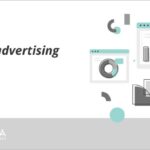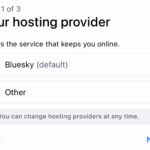Email sequences for student recruitment are crucial for attracting and engaging prospective students. This comprehensive guide dives deep into crafting effective strategies, from defining the perfect sequence to optimizing delivery and measuring results. We’ll explore the entire student journey, personalizing messages, and integrating with other recruitment channels for a seamless experience.
By understanding the nuances of each stage, from initial interest to enrollment, you can create email sequences that resonate with prospective students and ultimately increase your enrollment rates. We’ll dissect compelling subject lines, persuasive language, and the power of storytelling to craft emails that stand out in a crowded inbox.
Defining the Email Sequence Strategy

An effective email sequence for student recruitment is a meticulously crafted series of emails designed to nurture prospective students through their journey from initial awareness to enrollment. It’s not a one-off blast but a strategic communication plan that guides prospects through the decision-making process, highlighting the value proposition of your institution and programs. This approach builds trust, demonstrates expertise, and ultimately increases conversion rates.This approach goes beyond simple promotional messages.
It’s about understanding the student’s needs and motivations at each stage, delivering relevant content, and providing valuable resources. This tailored communication fosters a connection and strengthens the institution’s brand in the minds of prospective students.
Email Sequence Stages
Understanding the various stages of a prospective student’s journey is crucial for creating an effective email sequence. These stages include initial awareness, exploration, consideration, decision, and enrollment.
- Initial Awareness: This stage focuses on introducing the institution and its programs to potential students. Emails at this stage should highlight key strengths, such as faculty expertise, unique programs, or campus facilities, without overwhelming them with too much information. For example, a brief introduction email highlighting the program’s focus and unique offerings would be effective.
- Exploration: Students in this phase are actively researching different programs and institutions. Emails should provide more in-depth information about specific programs, academic resources, and student life. They should include links to relevant program pages, faculty profiles, and student testimonials. An email showcasing student success stories or alumni achievements would be effective at this stage.
- Consideration: At this stage, students are comparing different institutions and programs. Emails should highlight the unique value proposition of the specific institution, emphasizing factors like financial aid opportunities, career services, or extracurricular activities. An email outlining the institution’s financial aid process, including scholarship opportunities, would be highly effective here.
- Decision: This stage involves a final decision on which institution to attend. Emails should address any remaining questions, clarify doubts, and encourage enrollment. These emails should emphasize the next steps, like application deadlines, application requirements, and the enrollment process. An email reminding them of the deadlines and the steps to finalize their application would be crucial at this point.
- Enrollment: The final stage involves welcoming the student and providing essential onboarding information. This email should be concise and contain key details about orientation, accommodation, and campus resources. An email confirming their enrollment and listing the next steps, including campus orientation details, would be appropriate.
Key Elements of an Effective Email Sequence
A compelling email sequence incorporates several key elements that resonate with prospective students.
- Personalization: Tailoring emails to individual student interests and needs is vital. This could include referencing specific programs or mentioning shared interests. Personalization builds a stronger connection.
- Value Proposition: Highlighting the unique benefits of the institution and programs is essential. Clearly articulating the value proposition of your programs helps prospective students understand the unique advantages of attending your institution.
- Clear Call to Action (CTA): Each email should have a clear and compelling call to action. This could be visiting a program page, scheduling a virtual tour, or applying for admission. A clear call to action is vital for driving engagement and conversions.
- Engaging Content: Content should be relevant, informative, and engaging. Using visuals, infographics, and concise language enhances the appeal and understanding of the information.
- Responsive Design: Ensuring emails are mobile-friendly is critical. Emails should adapt to various devices, providing a seamless user experience for prospective students.
Email Sequences for Different Demographics
Email sequences should be adapted to different student demographics to resonate with their specific needs and interests.
- High School Students: These sequences should emphasize the unique advantages of your institution for high school students, such as extracurricular activities, support systems, and career guidance.
- Transfer Students: These sequences should highlight the advantages of transferring to your institution, focusing on the seamless transition, course equivalencies, and financial aid options.
- International Students: These sequences should address the specific needs of international students, including visa requirements, cultural adjustment support, and financial aid options for international students.
Sample Email Sequence for a Specific Program
This is a sample email sequence for prospective students interested in a “Data Science” program.
| Email # | Subject | Content Snippet |
|---|---|---|
| 1 | Introducing the Data Science Program | Highlighting the program’s focus and unique offerings. |
| 2 | Career Opportunities in Data Science | Showcasing career paths and industry trends. |
| 3 | Meet Our Faculty Experts | Introduce faculty with expertise in data science. |
| 4 | Data Science Student Success Stories | Showcase student achievements and projects. |
| 5 | Next Steps in Applying to Data Science | Guide students through the application process. |
Crafting Engaging Email Content
Crafting compelling email content is crucial for student recruitment. Emails need to capture attention quickly, present valuable information clearly, and motivate action. A well-structured email sequence can significantly impact a student’s decision-making process, making it a vital component of your overall recruitment strategy.Persuasive language, compelling storytelling, and visually appealing design all contribute to a positive user experience and higher engagement rates.
By understanding the needs and motivations of prospective students, you can create emails that resonate with them and encourage them to learn more about your institution.
Compelling Subject Lines
Subject lines are the first impression. A captivating subject line significantly increases the likelihood of an email being opened. They should be concise, clear, and relevant to the content of the email. Avoid generic subject lines like “University Update.” Instead, use subject lines that create curiosity and highlight the unique value proposition of your institution.Examples of effective subject lines include:* “Discover Your Dream Career Path at [University Name]””Exclusive Scholarship Opportunities Await at [University Name]”
“Unlock Your Potential
[University Name] Admissions”
Persuasive Language
Persuasive language is essential to encourage engagement and interest. Use words and phrases that evoke emotion, build trust, and highlight the benefits of choosing your institution. Emphasize the positive aspects of studying at your university, focusing on student success stories and unique programs.
Storytelling in Email Content
Stories connect with students on an emotional level. Sharing relatable stories of current students, alumni, or faculty members can build trust and demonstrate the impact of your institution. This method allows prospective students to visualize themselves as part of your community and understand the value of your programs.For instance, a story about a student overcoming challenges to achieve academic success can resonate deeply with potential students facing similar obstacles.
Highlighting the supportive environment and resources available at your institution within the narrative reinforces the value proposition.
Visual Elements
Visual elements such as images and videos can significantly enhance email engagement. High-quality images of campus life, student activities, and successful graduates can evoke a sense of community and excitement. Videos showcasing student testimonials, program demonstrations, or campus tours can be particularly effective.
Email Template Design
A well-designed email template ensures that the message is easy to read and understand. A clear and concise layout is essential. The template should prominently feature a clear call to action (CTA). The CTA should guide the student to the next step, such as visiting your website, scheduling a visit, or requesting more information.
| Element | Description |
|---|---|
| Visuals | High-quality images or videos showcasing campus life, student activities, and faculty expertise. |
| Call to Action (CTA) | Clear and prominent button or link directing students to the desired next step (e.g., visit the website, schedule a campus tour, apply for admission). |
| Layout | A clean and easy-to-read layout with sufficient white space to avoid visual clutter. |
Personalization and Segmentation

Connecting with prospective students on a personal level is crucial for successful recruitment. Generic emails often get lost in the inbox, while personalized messages stand out and foster a stronger connection with potential applicants. Segmentation plays a key role in this personalization process, allowing for targeted outreach that resonates with individual student needs and aspirations. This approach increases engagement and conversion rates, ultimately driving enrollment.
Importance of Personalization
Personalized emails create a sense of individual attention, making students feel valued and understood. They recognize that the institution understands their unique interests and needs. This tailored approach leads to higher open and click-through rates, a critical factor in email marketing effectiveness. It also builds trust and strengthens the relationship between the student and the institution, increasing the likelihood of application and enrollment.
Segmenting Students
Effective segmentation requires identifying key characteristics and interests of potential students. This process allows for targeted messaging and increases the chances of capturing their attention. Consider segmenting based on:
- Program Interests: Students interested in specific majors or programs can receive targeted emails highlighting relevant information, faculty profiles, and program-specific events. For example, students interested in engineering may receive emails about engineering workshops, while students interested in the humanities may receive emails highlighting humanities events and faculty talks.
- Location: Geographical location is another important segmenting criterion. International students, local students, and students from different regions might have unique needs and preferences. Regional events, scholarships, or support services can be highlighted in emails to students in specific areas.
- Academic Background: Categorizing students by their academic background (high school GPA, standardized test scores, previous degrees) allows for targeted outreach. Students with high GPAs or test scores might be targeted with information about scholarships or honors programs, while students with specific academic backgrounds might be informed about programs that align with their experiences.
- Specific Needs: Consider students who require specific support services (e.g., students with disabilities, first-generation college students, or students from underrepresented groups). Tailoring the email sequence to address these specific needs enhances their engagement with the institution.
Tailoring Email Content
Once segments are defined, email content needs to be adapted accordingly. Emails should be tailored to reflect the specific interests and needs of each segment.
- Subject Lines: Subject lines should be concise and relevant to the segment’s interests. For instance, a subject line for students interested in engineering could be “Explore Engineering Opportunities at [University Name].” A subject line for international students might be “International Student Scholarships and Support.” Consider using personalization tokens to make subject lines even more relevant.
- Body Content: Tailor the body of the email to the specific segment. Highlight relevant programs, faculty, events, and resources. Include compelling visuals, such as campus photos or videos, that resonate with the segment’s interests.
- Call to Action: The call to action should be specific to the segment. Encourage students to visit the website, attend an event, or schedule a consultation. Tailor the call to action to their unique needs.
Collecting Data for Personalization
Collecting data effectively is essential for improving personalization strategies. Data collection methods include:
- Website Forms: Use forms on the website to collect information about student interests and preferences. These forms should ask relevant questions and provide clear instructions.
- Student Surveys: Conduct surveys to gather feedback on student experiences and needs. This allows for continuous improvement in email sequences and outreach strategies.
- CRM Systems: Leverage Customer Relationship Management (CRM) systems to track student interactions with the institution and gather valuable insights.
Examples
- Subject Line Example (for engineering students): “Engineering Scholarships and Workshops at [University Name]”
- Email Body Example (for engineering students): Highlight engineering-specific programs, workshops, and faculty research. Include information about scholarships, internships, and alumni connections in the engineering field.
- Subject Line Example (for international students): “International Student Resources and Support at [University Name]”
- Email Body Example (for international students): Highlight support services for international students, information about visa processes, and details about campus life.
Optimizing Email Delivery and Tracking: Email Sequences For Student Recruitment
Email campaigns are a cornerstone of student recruitment, but their effectiveness hinges on efficient delivery and meticulous tracking. This phase focuses on maximizing open and click-through rates, refining your strategy through A/B testing, and measuring the return on investment (ROI) of your efforts. Understanding your audience and maintaining a healthy email list is paramount to maintaining a successful campaign.
Optimizing Email Delivery
Email deliverability is a crucial aspect of any recruitment campaign. Factors like sender reputation, email list hygiene, and spam filters play a significant role. Maintaining a clean email list, free of inactive or invalid email addresses, is essential for ensuring your emails reach the intended recipients. Using reputable email marketing platforms and employing best practices, such as avoiding spam trigger words and ensuring your emails are compliant with CAN-SPAM regulations, are crucial.
A/B Testing Email Variations
A/B testing allows you to refine your email campaigns based on real-time data. By experimenting with different subject lines, email content, call-to-actions, and sender names, you can identify which elements resonate most with your target audience. This iterative process leads to improved open and click-through rates. For example, testing subject lines that include s related to specific programs or departments can significantly impact open rates.
Similarly, variations in call-to-action buttons can influence click-through rates.
Crafting effective email sequences for student recruitment is crucial. These sequences need to be engaging and informative, highlighting the unique benefits of your program. To ensure a smooth user experience, consider incorporating clever JavaScript redirects for SEO, like those detailed on javascript redirects for seo , which can help optimize your landing pages for better search engine visibility.
This ultimately improves your student recruitment efforts by driving more qualified leads to your program. A well-structured email sequence, combined with SEO best practices, is key to attracting the right students.
Tracking Email Campaign Performance
Effective tracking is essential for measuring the ROI of your email campaigns. Key metrics include open rates, click-through rates, conversion rates, and unsubscribe rates. Utilizing email marketing platform analytics dashboards and custom reporting allows you to monitor these metrics and identify areas for improvement. Analyzing these data points provides insights into campaign effectiveness, enabling adjustments to optimize future campaigns.
Email List Hygiene and Unsubscribes
Maintaining a healthy email list is vital for deliverability and engagement. Regularly cleaning your list by removing inactive or bounced email addresses ensures your messages reach active recipients. Implementing clear and easily accessible unsubscribe options is crucial for compliance and maintaining a positive sender reputation. This demonstrates respect for recipient preferences and safeguards against being flagged as spam.
Table of Email Metrics
| Metric | Significance |
|---|---|
| Open Rate | Indicates the percentage of recipients who opened the email. A higher open rate suggests that the subject line and sender name are effective in attracting interest. |
| Click-Through Rate | Represents the percentage of recipients who clicked on a link within the email. High click-through rates indicate that the email content is engaging and compelling, driving desired actions. |
| Conversion Rate | Measures the percentage of recipients who completed a desired action, such as filling out an application or visiting a website. This directly relates to the campaign’s recruitment goals. |
| Unsubscribe Rate | Reflects the percentage of recipients who opted out of receiving future emails. A low unsubscribe rate suggests that the email content is relevant and valued by the recipients. |
Integrating with Other Recruitment Channels
A successful student recruitment strategy relies not just on email, but on a cohesive experience across all touchpoints. Integrating your email sequences with other channels like social media and website landing pages creates a unified and engaging journey for prospective students. This interconnected approach not only amplifies your message but also nurtures leads effectively, ultimately boosting your recruitment efforts.Integrating email with other channels is crucial for a multi-faceted recruitment approach.
Crafting effective email sequences for student recruitment is key, but optimizing your HubSpot setup can significantly impact your ROI. Understanding how to optimize the cost of HubSpot, for example, by leveraging automation and targeted messaging, is crucial for maximizing your student recruitment efforts. This means streamlining your sequences, identifying areas for improvement, and ensuring every email resonates with prospective students, ultimately leading to more successful outreach.
how to optimize the cost of hubspot will help you fine-tune your strategy.
This ensures a consistent brand message and fosters trust and engagement among potential students. This approach also enables a more comprehensive understanding of student interactions across different platforms, allowing for targeted and personalized communication.
Crafting effective email sequences for student recruitment is crucial. Knowing how to reach the right students requires a targeted approach, and understanding the essential SEO metrics to focus on, like keyword rankings and click-through rates, is key for optimizing your campaigns. discover the essential seo metrics to focus on to truly refine your email strategy.
Ultimately, a strong email sequence, informed by solid SEO practices, will greatly increase your student recruitment success.
Optimizing Recruitment Workflows with Automation
Email marketing automation tools play a vital role in streamlining recruitment workflows. By automating tasks such as sending welcome emails, follow-up messages, and personalized content based on student interactions, recruiters can free up time and focus on more strategic tasks. This efficiency translates into a faster and more effective recruitment process, leading to higher conversion rates.
Integrating Email Sequences with Social Media
Social media platforms are excellent channels for generating leads. Integrating email sequences with these platforms enables the nurturing of those leads. When a student interacts with your social media content, you can automatically send them a tailored email that provides more information or connects them to relevant resources. This allows for a seamless transition from social media engagement to the next stage of the recruitment process.
For example, if a student follows your university’s Instagram account and expresses interest in a specific program, an automated email sequence could be triggered, delivering program details, faculty introductions, and student testimonials.
Using Email Sequences to Nurture Leads from Website Landing Pages
Landing pages dedicated to specific programs or events serve as critical entry points for potential students. Implementing email sequences triggered by actions on these pages allows for targeted communication. For example, a student who downloads a brochure from a program landing page could automatically receive a follow-up email containing additional information, contact details for program coordinators, and links to virtual events.
This personalized approach helps convert leads into enrolled students.
Creating a Cohesive Student Recruitment Experience
A unified experience across all platforms is crucial for student recruitment. A student should feel like they are interacting with a single, consistent entity throughout their journey, regardless of the channel. Consistency in branding, tone, and messaging is paramount. For example, the language used in your social media posts should align with the language in your email sequences and website content.
This cohesive experience fosters trust and strengthens your university’s brand image.
Table Demonstrating Integrations with Recruitment Platforms
| Recruitment Platform | Integration Strategy | Example |
|---|---|---|
| Social Media (e.g., Instagram, Facebook) | Use social media engagement (likes, comments, shares) as triggers for automated email sequences. | A student who likes a post about a specific program receives an email with more details about the program. |
| Website Landing Pages | Trigger email sequences based on actions on specific landing pages (e.g., downloading a brochure, filling out a form). | A student who downloads a brochure on a program landing page receives a series of emails detailing the program’s curriculum, faculty, and student testimonials. |
| Recruitment Platforms (e.g., Handshake) | Integrate with recruitment platforms to automatically send emails to students who apply or express interest. | A student who applies for a specific program receives an email acknowledging their application and providing next steps in the application process. |
Measuring and Improving Results
Tracking the effectiveness of your student recruitment email sequences is crucial for optimizing your strategy and maximizing ROI. Understanding what resonates with potential students and identifying areas for improvement is key to achieving your recruitment goals. Data-driven insights will guide you towards a more targeted and efficient approach.Analyzing the results of your email sequences provides valuable feedback on the performance of your messaging, subject lines, and calls to action.
This allows you to refine your approach and adapt your strategies based on what’s working and what’s not.
Tracking Email Sequence Effectiveness
Analyzing email sequence effectiveness requires a systematic approach to tracking key metrics. This involves integrating tracking mechanisms into your email platform to gather comprehensive data. Crucial data points include open rates, click-through rates, and conversion rates. Monitoring these metrics over time allows for a deeper understanding of campaign performance.
Key Metrics for Recruitment Success
Recruitment success is measured not just by the number of applications received, but also by the quality of those applications and the eventual enrollment rate. Critical metrics include the number of qualified leads generated, the conversion rate from leads to applicants, and the conversion rate from applicants to enrolled students. Analyzing these metrics provides a comprehensive view of the effectiveness of your recruitment strategy.
A/B Testing Strategies
A/B testing is an essential tool for optimizing email sequences. By systematically varying elements of your emails, such as subject lines, call-to-actions, or email content, you can identify which variations perform best. This process involves sending different versions of the same email to different segments of your target audience and measuring the response of each variation. Key metrics like open rates and click-through rates provide data-driven insights to inform your decisions.
Analyzing Data for Improvement
Analyzing the collected data from your email sequences allows for identification of areas needing improvement. Patterns in email performance can indicate issues with specific subject lines, email content, or the overall structure of your sequence. For instance, low open rates might suggest that subject lines need improvement, while a high bounce rate might indicate issues with email addresses in your database.
By analyzing the data, you can identify these weaknesses and make adjustments accordingly.
Key Performance Indicators (KPIs) for Email Recruitment Sequences
| KPI | Definition | Importance |
|---|---|---|
| Open Rate | Percentage of recipients who opened the email. | Indicates the effectiveness of subject lines and sender reputation. |
| Click-Through Rate (CTR) | Percentage of recipients who clicked on a link within the email. | Measures the engagement with email content and calls to action. |
| Conversion Rate | Percentage of recipients who completed a desired action (e.g., applying). | Indicates the effectiveness of the entire recruitment funnel. |
| Bounce Rate | Percentage of emails that could not be delivered. | Highlights issues with email addresses in the database. |
| Unsubscribe Rate | Percentage of recipients who unsubscribed from the email list. | Indicates the level of engagement with the emails and the relevance of the content. |
| Time to Conversion | Average time taken for a recipient to convert from an initial interaction to an application. | Evaluates the efficiency of the entire email sequence. |
Example Email Sequences
Crafting effective email sequences is crucial for student recruitment. A well-structured sequence can nurture leads, build relationships, and ultimately drive conversions. This section delves into practical examples, showcasing the power of tailored messaging and strategic timing.Email sequences are not one-size-fits-all. Different programs, student demographics, and individual needs require unique approaches. This section explores strategies for developing targeted sequences that resonate with specific student audiences, from prospective undergraduates to international graduate students.
Sample Email Sequence for a Software Engineering Program, Email sequences for student recruitment
This example demonstrates a sequence designed to nurture prospective students interested in the Software Engineering program. The sequence targets different stages of the recruitment funnel, from initial interest to application submission.
| Email Number | Subject Line | Content Snippet | Call to Action |
|---|---|---|---|
| 1 | Welcome to the Software Engineering World! | A warm welcome message highlighting the program’s strengths and key faculty. Includes a brief overview of the curriculum and career opportunities. | Learn more about the program and explore our website. |
| 2 | Meet Our Faculty: Experts in the Field | Introduces key faculty members, showcasing their expertise and research. Emphasizes the hands-on learning approach. | Watch faculty interviews and see the latest projects. |
| 3 | Real-World Projects and Industry Connections | Details on the program’s emphasis on practical experience, highlighting recent projects and partnerships with industry leaders. | Explore the student portfolio and contact alumni. |
| 4 | Application Deadline is Approaching | A reminder about the application deadline, providing clear instructions and deadlines. Includes links to application forms. | Apply now before the deadline! |
| 5 | Congratulations! Your Application is Received | Confirmation email acknowledging receipt of the application, along with next steps in the review process. | Stay tuned for updates. |
High-Converting Email Sequence Example
A successful student recruitment campaign for a Master’s in Data Science program utilized a multi-stage email sequence. The sequence focused on providing valuable content, building credibility, and nurturing interest. The initial emails highlighted the program’s unique features, such as industry collaborations and capstone projects. Later emails included testimonials from alumni, showcasing their career paths and successes. The sequence also included a series of webinars and Q&A sessions, further engaging prospective students and addressing their questions.
Personalized follow-up emails were sent to those who interacted with the initial emails, providing a more tailored experience.
Tailoring Email Sequences to Different Program Levels
Email sequences should be customized for undergraduate and graduate programs. Undergraduate sequences might focus on introductory information, while graduate sequences emphasize advanced topics, research opportunities, and career paths. For example, an undergraduate sequence could emphasize the program’s supportive environment and career services, whereas a graduate sequence might highlight the research opportunities and faculty expertise. Different program levels have distinct needs and expectations, and the email sequence should address these differences effectively.
Email Sequences for Different Student Needs
International students often require specialized support and information. A dedicated email sequence for international students can provide information on visa requirements, financial aid, and cultural integration. This sequence should clearly Artikel the steps involved in the application process, address concerns specific to international students, and highlight support services available. Such a sequence can significantly increase the conversion rate for international applicants.
Outcome Summary
In conclusion, mastering email sequences for student recruitment requires a multifaceted approach. From defining your strategy to personalizing content and optimizing delivery, this guide provides a roadmap for success. By tracking key metrics and adapting your sequences based on results, you can cultivate a robust and effective student recruitment strategy that drives enrollment and builds a thriving community. This will allow you to build a strong foundation and reach your target audience efficiently.









